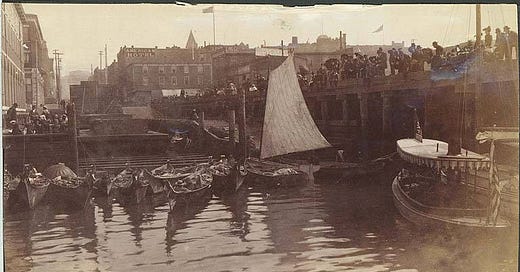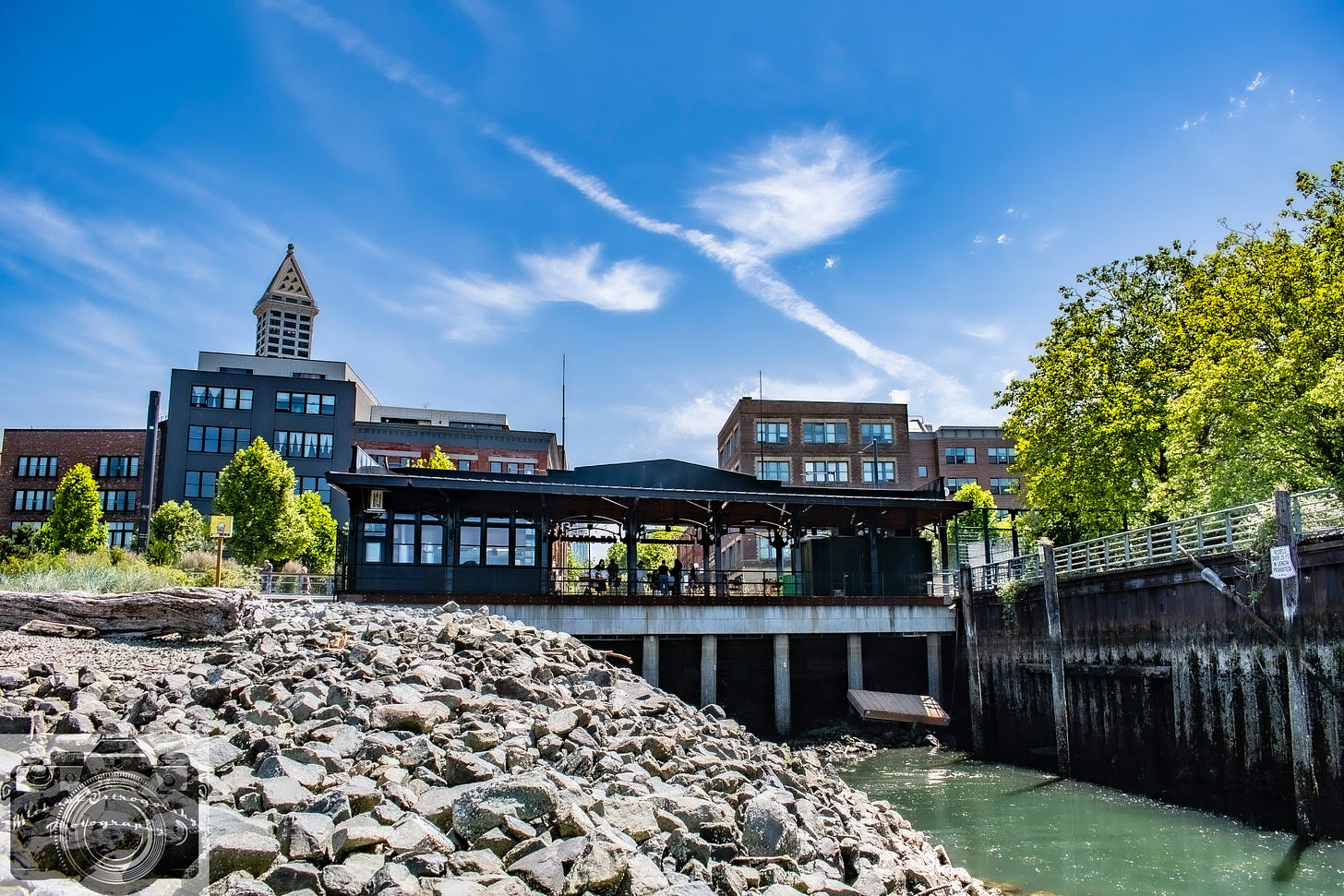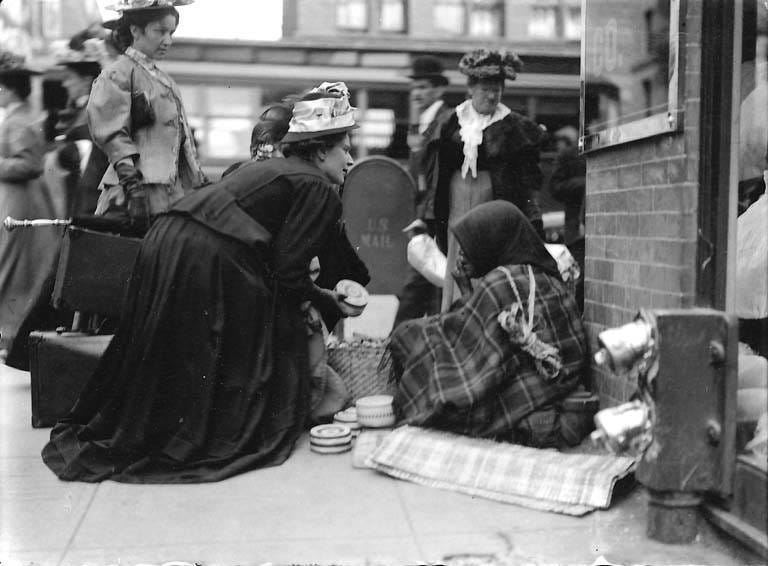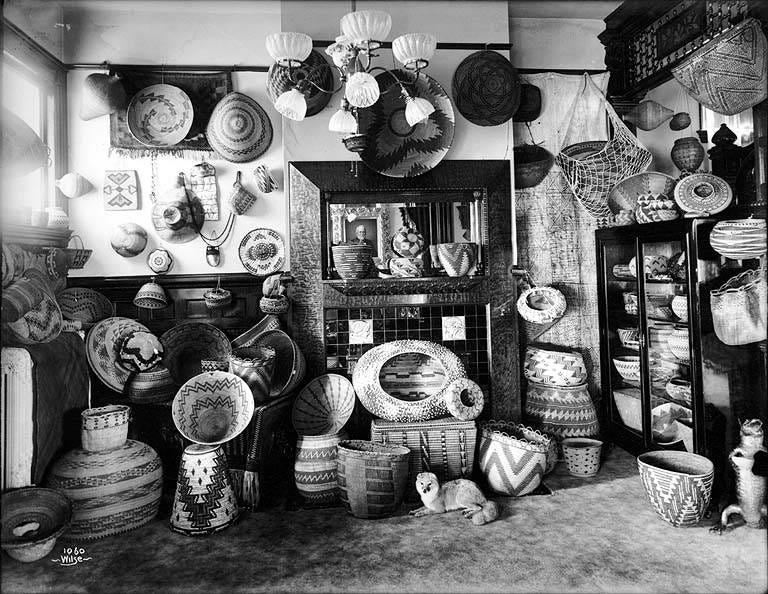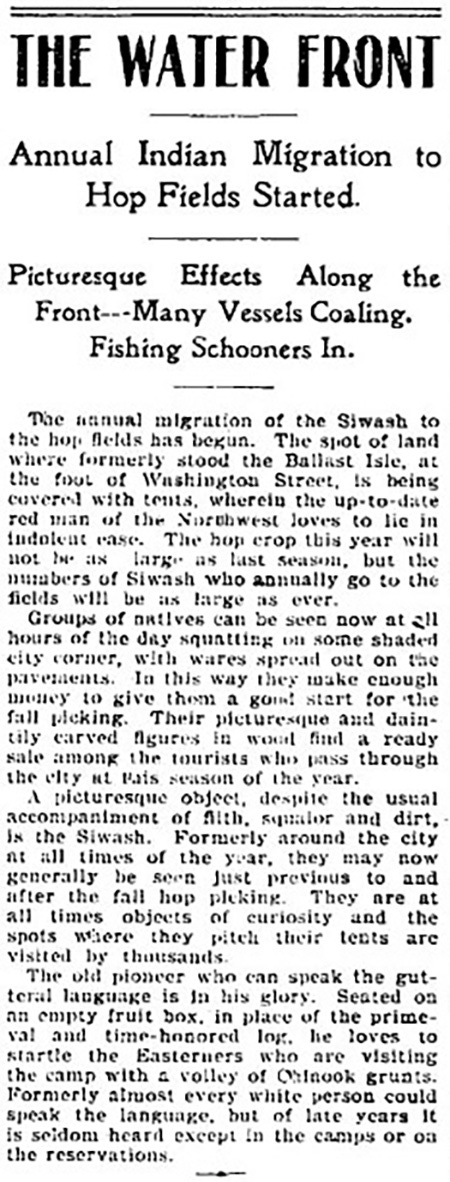Fabulous circa 1892 photograph of Native American canoes docked at Seattle’s Washington Street Boat Landing, by pioneer Seattle photographer Frank La Roche, titled The Venice of America (University of Washington Libraries Digital Collections). Most likely August or September of 1892. Note the American Hotel which pinpoints the location of this photograph. The hotel is the three-story building below the sign, one of the first masonry buildings constructed following the Great Seattle Fire of 1889, renamed the St. Charles Hotel by the end of century. The St. Charles Hotel still stands. A crowd of sightseers is standing atop what is today Pier 48. The itinerant Native travelers look to have set up shop to sell crafts and possibly seafood, center left of photograph. After gathering some cash and supplies, the Natives would paddle off to work harvesting hop fields up the Duwamish valley, before returning to overwinter at their homes around the Pacific Northwest and even Alaska.
Frank La Roche (1853-1936) was an experienced photographer by the time he arrived in Seattle to open a photography studio in the ashes of the Great Seattle Fire of 1889. He photographed Seattle’s explosive growth in the aftermath of the Great Fire and got swept up by the Klondike Stampede to the Yukon, documenting the travails of the stampeders as well as the lives of Native peoples of the Yukon and Alaska. More than 300 of his photographs are preserved in the University of Washington Libraries Digital Collections.
My view of the Washington Street Boat Landing from nearly the same spot where Frank La Roche stood in 1892, except he stood on a boat whereas I am standing on a rock jetty. At the center of my photograph stands the 1920 Seattle Harbor Department pergola, the pre-Port of Seattle city department that managed the Washington Street Boat Landing. The St. Charles Hotel is visible through the center bay of the pergola.
Puget Salish people inhabited Seattle from the day the town was created May 23, 1853, and for years outnumbered white inhabitants. Seattle remained as much an Indian village as a frontier town until the 1880s, when Seattle’s population exploded from 3,500 residents counted by the 1880 Census to 42,000 by the 1890 Census. By the time Frank La Roche took his photograph in 1892, Native residents of Seattle had been swept out of the daily consciousness of the white populace into the shadows of the city, hanging on in the Sawdust (capital “S”, Seattle’s red light district) and the tidelands, in the face of industrial and commercial expansion of the city. By the time of the Great Seattle Fire of 1889, the arrival of Native Americans to the booming city, many from Vancouver Island and Alaska, en route to work the fall harvest of hop fields in the Duwamish valley, became a municipal attraction. Seattle’s Victorian era white residents looked upon Indians as novelties and their crafts as curiosities. It is no mere coincidence that Seattle’s famed Ye Olde Curiosity Shop, founded 1899 by Joseph Edward “Daddy” Standley, featured the word Curiosity in its name. Daddy Standley purchased art work from Native vendors, he also hired Native artists to create pieces for his shop.
The annual autumnal arrival of the Native canoe flotilla turned the Seattle waterfront into a street festival, as Seattleites rushed to peruse Native wares.
Webster and Stevens circa 1911 photograph of Victorian ladies purchasing baskets from a Native vendor on a Seattle street corner (University of Washington Libraries Digital Collections).
Seattle Daily Times September 3, 1897
Upper crust Victorian households proudly displayed their Native arts and crafts collections in rooms specifically set aside for that purpose in their First Hill and Queen Anne mansions.
Anders Beer Wilse’s circa 1900 photograph of timber matriarch Nellie Stimson’s Native crafts room (University of Washington Libraries Digital Collections).
The Seattle Daily Times typically looked down their noses at the seasonal arrival of the Native canoe flotilla with unveiled disgust and mocking scorn.
Seattle Daily Times, August 20, 1900


